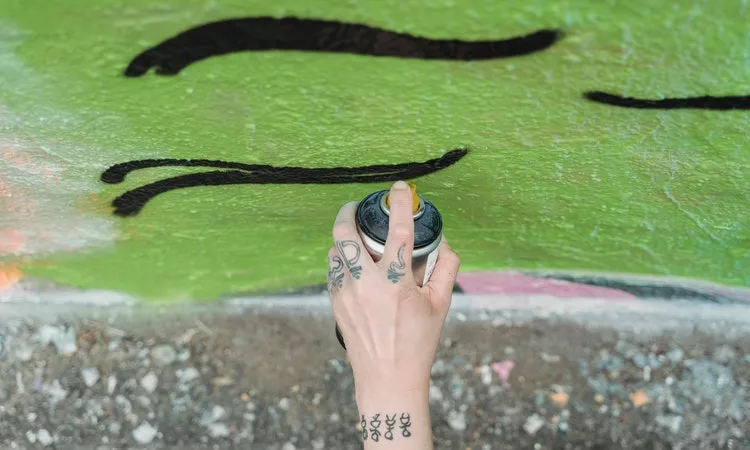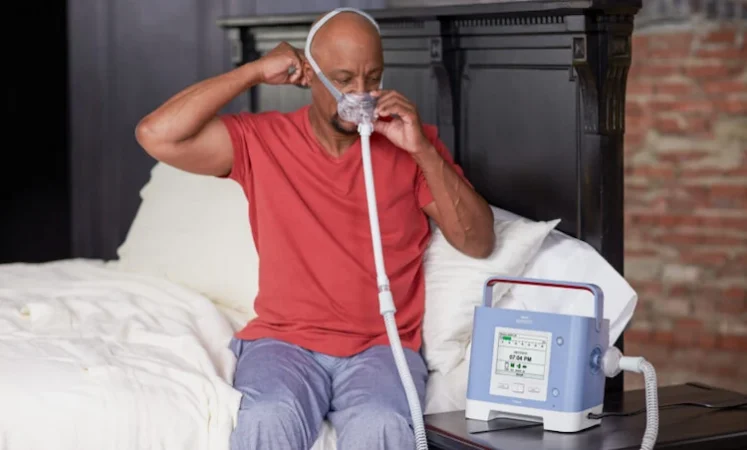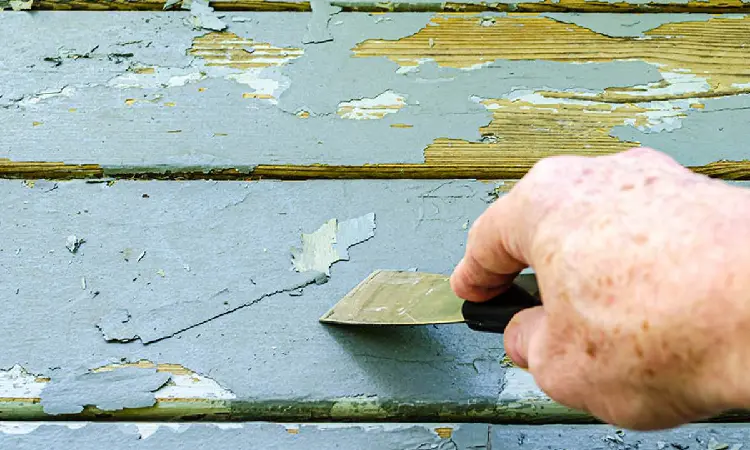If you’re considering repainting your house or your car with spray paint, you might have been concerned to hear how paint fumes negatively affect human health.
Should you worry about inhaling the paint? How dangerous can it be, and what can you do if you were exposed?
The danger of gasping spray paint depends on the type and the amount. Oil-based paints are more dangerous than water-based.
It is best to get some fresh air if you inhale spray paint. Performing controlled breathing, drinking tea, and steam therapy may also help clear the lungs of toxins.
It is inarguable that paints contain toxic fumes that are hazardous to humans and the environment.
You are about to discover why paints are toxic or what ingredients make them dangerous.
Furthermore, you will also learn tips on what to do after inhaling spray paint.

Are Spray Paint Fumes Toxic?
Spray paint fumes are generally toxic because of the chemical components of the paint.
The solvents and other inorganic ingredients can emit a variety of volatile organic compounds (VOCs). These VOCs make the fumes dangerous.
A study supports that inhalation of these harmful chemicals causes a range of adverse health issues.
The toxicity level of spray paint fumes depends on the type of paint.
Acrylic or water-based paints contain fewer VOCs than organic solvent-based or oil-based paints.
Thus, the former may not have lasting side effects when inhaled. However, it is still better to avoid exposing yourself.
Spray Paint Ingredients that Make it Hazardous
Spray paints are popular because they are handy and easy to use. However, toxic fumes fill the air when you press the can’s nozzle, exposing yourself to possible health dangers.
The common chemicals apart from basic components used in spray paint include:
- Carbon black
- Acetone
- Methyl ethyl ketone
- Liquefied petroleum gas (LPG)
- Xylene
- n-Butyl acetate
- Ethylbenzene
- Magnesium silicate
Below are brief descriptions of these chemicals below and their potential dangers.
Carbon Black
Carbon black is a fine black powder obtained as soot from partial combustion of hydrocarbons. This pigment is usually mixed in products like tires, inks, and paints.
The health hazards it brings include irritation of the eyes, nose, and throat, lung complications, bronchitis, and obstructive pulmonary disease.
Acetone
Acetone is a solvent usually mixed in nail polish, paints, paint removers, and other products.
The common health problems associated with this substance are irritation of the nose, throat, and eyes, lung issues, cough, dizziness, headache, nausea and vomiting, fast heart rate, confusion, and unconsciousness.
Methyl Ethyl Ketone
Methyl ethyl ketone is a colorless, flammable substance with a strong odor. Exposure to this chemical can be hazardous to the eyes, nose, and skin.
The National Institute for Occupational Safety and Health (NIOSH) suggests that proper precaution is necessary when dealing with this substance to avoid injuries.
Liquified Petroleum Gas (LPG)
LPG is a colorless and odorless substance that quickly evaporates into a gas. Its chemical composition includes propane, butane, butylene, and other hydrocarbons.
It is an asphyxiant gas that causes unconsciousness or death through suffocation. This substance requires proper handling as it is highly flammable and can cause an explosion.
Xylene
Another harmful substance mixed in spray paint is xylene.
It is a colorless and flammable liquid. NIOSH enumerates the dangers of exposure to this substance, including irritation (eyes, nose, skin, and throat), headaches, dizziness, loss of muscle coordination, and even death.
n-Butyl Acetate
This is another colorless, flammable liquid with a fruity odor. Like the previous chemicals, exposure to n-butyl acetate also involves health risks.
These include irritation of the eyes and skin, respiratory tract problems, and depression.
Ethylbenzene
Ethylbenzene is another liquid with a sweet scent but is dangerous. The US Environmental Protection Agency (EPA) has a detailed breakdown of the health hazards of exposure to this substance.
These include irritation of the throat, constriction of the chest, irritation of the eyes, and dizziness.
Magnesium Silicate
Magnesium silicate is the result of combining magnesium oxide and silicon. This chemical is not as dangerous as the previously mentioned substances.
It is used in different industries, including pharmaceuticals, cosmetics, and food. Although it is safer for use, over administration or exposure can lead to bladder and renal failure.
Symptoms of Inhaling Spray Paint Fumes
You have just learned about the harmful chemicals in spray paint. Exposure to these substances can cause health conditions.
Here are some of the symptoms of inhaling spray paint:
- Irritated eyes
- Irritated nose
- Irritated throat
- Headache
- Dizziness
- Central nervous system depression
- Drowsiness
- Incoordination
- Nausea
- Vomiting
- Anxiety
- Insomnia
- Muscle fatigue
What Happens if You Inhale Spray Paint?

Inhaling spray paint doesn’t kill you in an instant. Although their fumes have obvious health risks, it doesn’t mean that the damaging effect is immediate.
The damage depends on the level of exposure. If you accidentally gasped spray paint, don’t worry so much. Your body mechanism would likely expel it.
On the other hand, there can be some direct effects of inhaling spray paint. These can include headaches, dizziness, incoordination, depression, nausea, vomiting, anxiety, and insomnia.
These would likely go away after a few hours, days, or weeks (it depends on the body’s response).
You may have heard about some people who intentionally inhale these harmful solvents in the paint to get high. It is not hearsay.
These people enjoy the side effects rather than worry. Is this good? Obviously, NOT. Over time, the damage will get worse and can lead to death.
If you are a painter who uses spray paint daily, the effect could be different. The final destination of spray paints when inhaled is the lungs.
People exposed to paint fumes can develop severe lung problems such as bronchitis and obstructive pulmonary disease. Extra precaution is required.
A study reveals that spray paint workers likely experience severe cough, breathlessness during work, wheezing, severe eyes and skin irritations, asthma, and bronchitis. Majority of the respondents (85%) report that they experience symptoms of bronchitis.
Related Read: How to Get Rid of Spray Paint Smell Faster?
Water-Based (Acrylic) Spray Paints
Acrylic spray paints use water as the main solvent. They do not have as many VOCs as oil-based paints.
However, it doesn’t mean that you can expose yourself to them or breathe them because they do produce minimal toxins. You will still feel some side effects, but they are not last.
What Should You Do?
If you inhaled acrylic spray paint, your body would likely dissolve it quickly as they are water-based. Although some remedies may be necessary to help detox your lungs, such as steam therapy, controlled coughing, and drinking tea.
If you do not experience anything after inhaling a good amount of acrylic spray paint, you don’t need to worry so much.
Your body will clear it out for you. As long as you do not frequently do it, there will be no lasting and damaging effect.
If you inhale a good amount of acrylic spray paint and it causes severe side effects, you should go to a physician for proper medication.
These side effects include breathing difficulties, nausea, vomiting, dizziness, and irritations of the eyes and skin.
Organic Solvent-Based (Oil) Spray Paints
Oil-based spray paints include plenty of harmful chemicals or VOCs.
Frequently inhaling them or their fumes could lead to severe health issues. Once the toxins get inside your body, it will take several years before your body fully expel them.
Gasping even a minimal amount of organic solvent-based paints could still have lasting effects.
The toxins may still end up in your lungs, and if you have a pre-existing condition, they may make it worse. Your lungs may be able to get rid of them, but it will take a few years.
What Should You Do?
If you inhale oil-based spray paint, you must do something. You cannot just ignore it. There are things that you can do to help clear out your lungs.
Take a look at the list below. These methods are also elaborated on in the following section.
- Controlled coughing
- Taking a deep breath
- Avoiding scents
- Using air purifiers
- Hooking yourself to a ventilator
- Steam therapy
- Drinking tea
- Eating anti-inflammatory food
- Increasing fluid intake
- Exercising to improve breathing
If the effect of inhaling oil-based paint is very concerning, it is ideal to consult a physician for proper advice and medication to alleviate the situation.
What Can You Do to Clear Your Lungs of Spray Paint?
Below are some ways to help expel spray paint from your lungs. They may not be the outright solution, and they may not remove the toxins from your lungs in one go, but doing them helps clear your lungs quicker.
Controlled Coughing
Coughing is our body’s natural way to clear or flush toxins out of our lungs. If you inhaled spray paint, your lungs would likely build up mucus.
The goal of performing controlled coughing is to push this mucus upwards through your airways. Here are the steps:
Step 1: Sit on a stool with a relaxed shoulder and feet flat on the ground or floor.
Step 2: Position your arms across your stomach and inhale through the nose.
Step 3: Slowly exhale and lean forward while your arms press your stomach.
Step 4: With an open mouth, cough 2 to 3 times as you exhale.
Step 5: Repeat the process as you feel required.
Taking A Deep Breath

Taking a deep breath has many more benefits than we realize. Deep breathing is the easiest and more convenient way to combat common health issues like stress, anxiety, pain, high blood pressure, and indigestion. If you take a deep breath, you detoxify your body as it stimulates the lymphatic system.
Step 1: Find a good place where fresh air is available.
Step 2: Relax. Lie on your back in bed with a pillow under your head and knees.
Step 3: Breathe in through your nose until you fill your belly with air.
Step 4: Breath out through your nose.
Step 5: Place one hand on your belly and the other on your chest. You know you are doing it right when the hand on your belly moves and not the one on your chest.
Step 6: Repeat the process up to 3 or 4 times.
Avoiding Artificial Scents
Don’t think inhaling perfume after ingesting spray paint could alleviate the situation because it will not.
Artificial scents certainly include VOCs, and smelling or inhaling them will do more damage than help. Therefore, avoiding them would speed up the recovery of your lungs from the toxins.
Step 1: Avoid using perfumes for several days.
Step 2: Avoid smelling other scented cosmetics products like nail polish, detergents, and fabric conditioners.
Using Air Purifiers
There is no doubt that air purifiers are getting some attention. The industry enjoyed a 57% sales growth in 2019, and it is continuously growing.
This growth could be attributed to the emergence of the Covid 19 pandemic. But are they effective? The short answer is YES.
Air purifiers help clean the air that you breathe. If the air in your surrounding is filled with spray paint fumes, they may help avoid worsening your exposure to the harmful toxins. However, despite their benefits, they do not replace medications.
Step 1: Install a larger system in your home if you spray the paint indoors.
Step 2: Wear a portable air purifier. There are small and wearable air purifiers available on the market. A study conducted in China proves that these are effective against pollutants and toxins.
Steam Therapy
Steam therapy is another effective way to detox your lungs.
Although a brief study concludes that this method does not provide a lasting solution to respiratory conditions, it could give temporary respiratory relief.
If you experience breathing difficulties after inhaling spray paint, this could potentially help.
Step 1: Boil water that could fill a large bowl.
Step 2: Carefully pour the boiled water into the bowl.
Step 3: Cover yourself with a blanket or a large towel. The goal is for you to breathe the air within your cover.
Step 4: Position the bowl of hot water inside the blanket.
Step 5: Close your eyes, lower your head (about 10 inches away from the bowl), and start inhaling the steam.
Step 6: Stop the process in 10 to 15 minutes.
Hooking Yourself to A Ventilator

A ventilator is a machine that helps you breathe. If you inhale spray paint and it is causing severe side effects, using a home ventilator could be a good idea.
It would help clear out your lungs from the paint toxins. See how to use the ventilating machine below.
Step 1: If you have a home ventilator, you must know how to operate it. However, always refer to the setup manual of the machine.
Step 2: Power up the machine.
Step 3: Connect the machine peripherals and the breathing tubes.
Step 4: Connect the masks to the breathing tube.
Step 5: Start using the machine. The above steps are generic. To ensure the machine is properly set up, you may need some professional assistance.
Drinking Tea
Drinking tea is an old practice embraced by the Chinese people. It is known to have started in China about 5000 years ago.
The reason this is still popular today is its medical benefits. Research proves that green tea contains antioxidants that help cure lung inflammation.
Green tea can also reduce the risk of chronic obstructive lung disease. Additionally, it improves the oxygen supply in the lungs.
Step 1: Boil the drinking water and wait until it gets lukewarm by allowing it to cool slightly for 2 to 3 minutes.
Step 2: Pour the lukewarm water onto the teabag inside a cup.
Step 3: Let the teabag release its delicious aroma for 2 to 3 minutes.
Step 4: Remove the teabag and start enjoying your tea.
Eating Anti-Inflammatory Food
Another way to help clean up your lungs is to eat food with anti-inflammatory properties, such as tomatoes, olive oil, and green leafy vegetables.
There are no steps to preparing these foods, but you can check this article to learn more about different anti-inflammatory diets.
Increasing Fluid Intake
Drinking a good amount of fluids will help detox your lungs from paint toxins. Milk is known to help detoxify the human body.
Simply increase your fluid intake and let your body do its job. Research reports that there were no randomized controlled trials (RCTs) that prove their effectiveness.
However, in general, staying hydrated will help you stay healthy. It helps your body organs effectively perform their functions.
Learn about how increasing fluid intake can help you in staying healthy here.
Exercising To Improve
Breathing The goal of regular exercises is to increase the body’s respiratory rate.
You are increasing your respiratory rate results in an enhanced supply of oxygen in the lungs. In other words, exercise strengthens the lungs.
The other benefits of exercise include the reduced chances of heart disease, stroke, diabetes, and chronic lung conditions. It also helps reduce weight gain and improves sleeping.
Additionally, it can potentially help in recovering from anxiety and depression.
Inhaling Spray Paint: FAQs
1. Can spray paint fumes give you flu-like symptoms?
Inhaling spray paint fumes can result in adverse effects, including headaches, nausea, vomiting, dizziness, and flu-like symptoms.
It may cause some throat and nose irritations. The symptoms of gasping harmful paint toxins can occur after a few hours or a day.
2. What do you do if you inhale too much spray paint?
If you inhaled too much spray paint, you can perform different methods that help clear the lungs, including controlled breathing, drinking tea, and gasping for a good amount of fresh air.
It is also highly suggested to seek medical attention, especially if the symptoms have stayed for a while.
3. How long does paint fume sickness last?
Paint sickness depends on the type of paint you inhale. If the paint was oil-based, it might take longer for the symptoms to go away.
There is no definite period on how long the sickness lasts. However, it may take 14 to 24 weeks for the paint to dissipate.
4. How long does it take for spray paint fumes to go away?
With proper ventilation, spray paint fumes could dissipate within two to three days.
The odor may become unnoticeable after 24 hours, but the toxins may linger for a little while.
Thus, it may not be safe to come closer to the area sprayed with paint during this period.
5. Is the smell of dry spray paint harmful?
The paint is not yet fully cured if it still smells. At this stage, it still produces a good amount of dangerous toxins that could affect your health.
Oil-based paints are also known to continue producing toxins even after they dry. Generally applied paints can be considered safe after 2-3 days.
6. How do you get rid of spray paint smell fast?
There are many natural products you can try that would potentially help you get rid of the spray paint smell faster.
These include activated charcoal, lemon water, baking soda, and coffee granules/grounds. Of course, none of these is 100% guaranteed, but you can give them a try.
7. Can you die from inhaling spray paint fumes?
Fumes from spray paint can cause death because of the toxins. But it doesn’t kill you right away.
However, frequent inhalation of toxic fumes is fatal. Toxins can accumulate and cause serious lung problems that could lead to death.
Conclusion
Inhaling spray paint is dangerous as it can lead to serious health issues.
The immediate effects are irritation of the eyes, skin, nose, and throat, dizziness, nausea, vomiting, flu-like symptoms, and others.
If you gasped a minimal amount of spray paint, it is less likely to cause severe damage.
However, if you inhale a good amount of spray paint, some things can help clear your lungs, including controlled coughing, drinking tea, steam therapy, and exercise.
It is also highly advised to seek medical assistance if the symptoms don’t go away for a few days.
As you now know, paint fume is dangerous to your health, so it is better to prevent its inhalation. Preventive masks can help minimize the ingestion of harmful toxins.
Doing your painting job in an open space (when possible) also helps reduce the toxins getting into your body.


